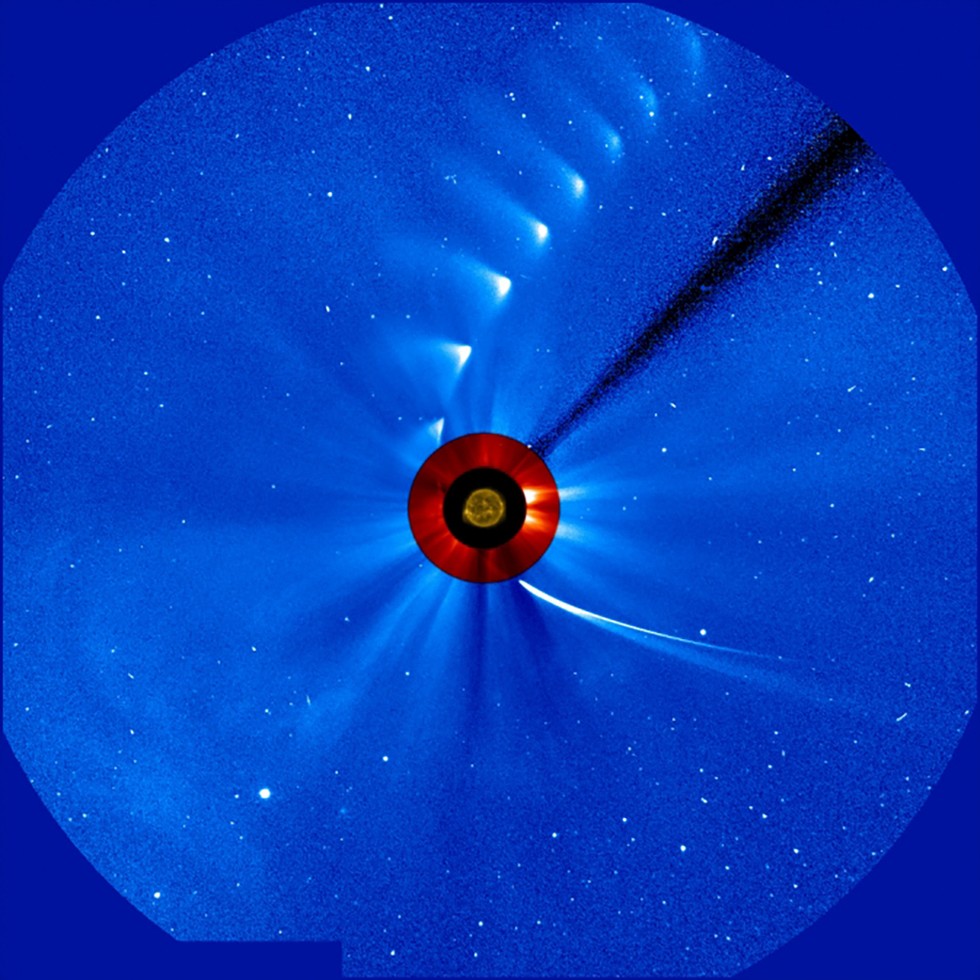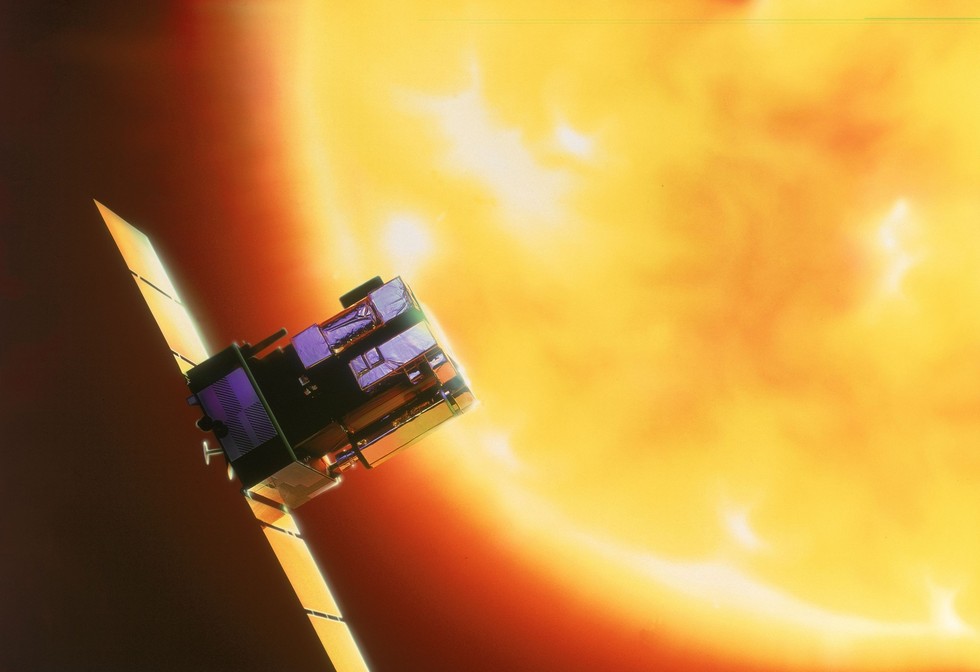Some Sungrazing Comets May Be Different Beasts

We've been spoiled with comet science lately. The Rosetta spacecraft orbited Comet 67P/Churyumov-Gerasimenko for about 18 months and sent back daily updates on how the comet is behaving and changing.
That mission is now over, but luckily there is a long-running mission that looks at sungrazers, or comets that pass really close to the sun. The Solar and Heliospheric Observatory (SOHO) spacecraft is designed to look at our nearest star ind its thin atmosphere, but luckily it can also watch comets swing by. In the last 20 years, it's discovered more than 3,000 of these objects.
Here's the neat thing — a minority of these sungrazers may not be comets after all. An object called 322P/SOHO 1 appears to have some properties of asteroids or space rocks, not that loose mix of ice and dust that comets are known for. This and other properties of sungrazers are discussed in a new paper led by Karl Battams, an astrophysicist at the Naval Research Laboratory in Washington, D.C. The paper is on the prepublishing service arXiv and has been accepted in the journal Philosophical Transactions A.
RELATED: Ace Solar Observatory to Make 3,000th Comet Discovery
"We found it kind of looks like an asteroid and it kinds of looks like a comet," Battams told Seeker. "There's a weird hybrid thing going on. The results were indeterminate, so we're not sure if this is something that was once a comet... or maybe an asteroid that got stuck. There's no definitive conclusion there."
Roughly 86 percent of the comets SOHO sees are definitely comets. They belong to a specific family called Kreutz comets, and includes the infamous Comet ISON that flew by the sun on Thanksgiving three years ago. The comet appeared to break up, then light up again before fading forever. It shows just how hard it is to make comet predictions; Battams himself remembers it as a crazy day.
The remaining 14 percent of sungrazers are more difficult to define, and are made up of four different groups known as the Meyer, Marsden, Kracht and Kracht II groups — as well as a "non-group" of objects that don't quite fit any of the other group's properties. Battams' paper suggests that most of these other sungrazers could be the cores of comets, or perhaps asteroids that somehow got close to the sun.
Breaking space news, the latest updates on rocket launches, skywatching events and more!
RELATED: Weird and Wonderful SOHO Observations
But more observations of sungrazers are needed. It's hard to predict their orbits because as they pass by the sun, the sun's gravity alters their path. For what it's worth, however, after a few passes by a short-term comet, scientists can make better predictions about where a comet is going. That is how a group led by Matthew Knight, from the University of Maryland, was able to observe 322P/SOHO 1 so far away from the sun, which was a first.
Battams points out how important it is to know about these sungrazers, which are often invisible when the sun's energy isn't so close by. Around 2008, he recalled, a Marsden group sungrazer passed extremely close to the moon's orbit, which is a close shave in astronomical terms. It speaks to the need, he said, to better track these objects in case there are some that are hazardous to Earth.
"SOHO kind of fills that gap, but it has a limited magnitude," he said, referring to the apparent brightness. SOHO can see objects down to magnitude 9 at best, which isn't far down below naked-eye visibility (which is roughly magnitude 6). A typical asteroid survey can go down to magnitude 22, he said.
SOHO remains in excellent health, and you can even get involved in the comet discoveries yourself.
Originally published on Seeker.

Elizabeth Howell (she/her), Ph.D., was a staff writer in the spaceflight channel between 2022 and 2024 specializing in Canadian space news. She was contributing writer for Space.com for 10 years from 2012 to 2024. Elizabeth's reporting includes multiple exclusives with the White House, leading world coverage about a lost-and-found space tomato on the International Space Station, witnessing five human spaceflight launches on two continents, flying parabolic, working inside a spacesuit, and participating in a simulated Mars mission. Her latest book, "Why Am I Taller?" (ECW Press, 2022) is co-written with astronaut Dave Williams.


